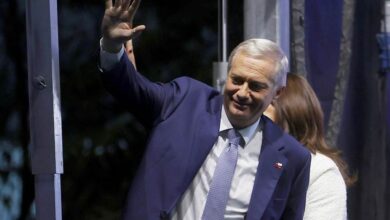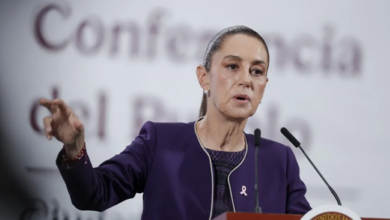Everything you need to know about Futnet
Listen this article
This sport, originally from the Czech Republic almost 100 years ago, arrives in South America with Colombia as a pioneer

FUTNET is a sport created in the Czech Republic in 1921, which is played on a court with a mesh of 1.10 meters high, according to the statement by Luisa Villamil, the captain FUTNET's selection from Colombia, to LatinAmerican Post.
Leer en español: Conozca más sobre el Futnet, otro deporte que se abre paso en Latinoamérica
According to the website of the European Association of FUTNET, this sport has 3 modes:
- Individual: in this category two players compete, which can make a maximum of two touches, one rebound is allowed for men and two rebounds for women and juniors and the dimensions of the court are 9m x 12.8 m.
- Double: two couples compete, each one can make up to three touches (but not two consecutive touches made by the same player), one rebound is allowed for men and two rebounds for women and juniors and the dimensions of the court are 9 mx 12.8 m
- Triple: two teams compete, each consisting of three players, which can make up to three touches (but not two consecutive touches made by the same player) and allows one rebound for men and two rebounds for women and juniors; the dimensions of the court increase to 9m x 18m.
You can also read: Tennis injuries: a usual problem
According to the website of the Spanish Association of FUTNET, "The FUTNET ball can remember a soccer ball in its size, but it is stuck, made of 32 panels, in black and white, of synthetic leather (natural) and when it inflates correctly, it must bounce more than half a meter", and "to win the game, the team has to win 2 sets. A set is won by the team that first scores 11 points with a minimum lead of two points or reaches first 15 points".
Villamil also expressed that the entity that endorses this sport is the World Organization of FUTNET, which organizes world championships every two years, interspersing them between male and female category and those currently attending around 27 countries.
The powers of the FUTNET worldwide are: Czech Republic, Slovakia, Romania, and South Korea and in Latin America is being practiced in countries such as Costa Rica and Colombia, the last one being the pioneer in South America and one of the most outstanding in the world-wide ones by the talent and the passion of their players, because, in spite of the little time that they have been training, they have demonstrated to be superior to countries that practice the sport for many years.
Luisa Villamil said: "One of our objectives is that sports not only grow in Colombia, but also look for allies or groups or people interested in the development of sport in different countries of South America." In Colombia, the foundation does not have different support to what's given for hydration and uniforms, so it is sought that both private and public companies help to promote the FUTNET in order that many more young people can practice it.
It is expected that this sport will quickly reach other Latin American countries so that people can obtain great health benefits with a non-traditional sport, but quite complete.
LatinAmerican Post | Andrea Rojas
Translated from "Conozca más sobre el Futnet, otro deporte que se abre paso en Latinoamérica "




